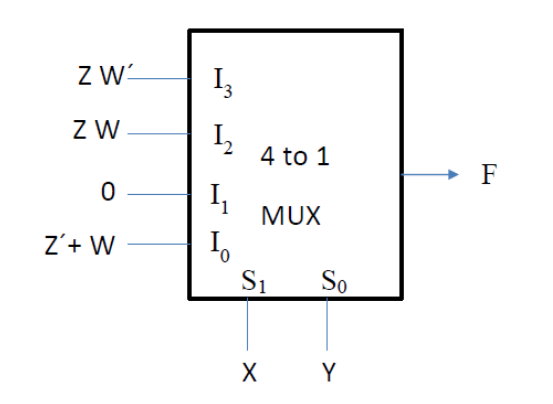A $4 \times 1$ multiplexer with two selector lines is used to realize a Boolean function $\text{F}$ having four Boolean variables $\text{X, Y, Z}$ and $\text{W}$ as shown below. $S_{0}$ and $S_{1}$ denote the least significant bit $\text{(LSB)}$ and most significant bit $\text{(MSB)}$ of the selector lines of the multiplexer respectively. $I_{0}, I_{1}, I_{2}, I_{3}$ are the input lines of the multiplexer.

The canonical sum of product representation of $\text{F}$ is
- $F\left ( X,Y,Z,W \right )=\sum \text{m}\left ( 0,1,3,14,15 \right )$
- $F\left ( X,Y,Z,W \right )=\sum \text{m}\left ( 0,1,3,11,14 \right )$
- $F\left ( X,Y,Z,W \right )=\sum \text{m}\left ( 2,5,9,11,14 \right )$
- $F\left ( X,Y,Z,W \right )=\sum \text{m}\left ( 1,3,7,9,15 \right )$